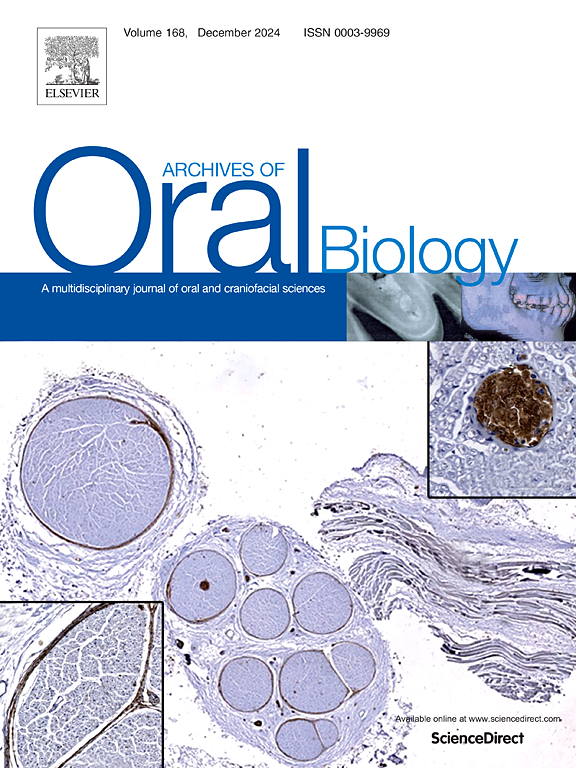在骨学系列中分析牙齿缺损以识别和诊断牙齿断裂模式。
IF 2.2
4区 医学
Q2 DENTISTRY, ORAL SURGERY & MEDICINE
引用次数: 0
摘要
目的: 制定识别牙齿缺损的具体方法,并确定其在过去人群中出现的时间:设计:分析的样本包括来自伊比利亚半岛不同青铜时代(阿尔加文化,公元前 1900-1450 年)的 2191 颗人类牙齿。在这些牙齿中,有 471 颗牙齿有缺口。我们使用各种显微技术(数字三维、光学和共聚焦)对崩裂进行了检查,重点是崩裂的分布、形态、在牙齿中的位置、损坏程度以及崩裂后的死前改造(PCAM):碎屑的分布和形态有助于确定碎屑的碎裂机制,为区分死前碎屑和死后碎屑提供了有效的标准。对崩裂片段--边缘、侧壁、表面和周围区域--的显微分析有助于确定崩裂发生的时间(死前:近期、较近期或非近期):尽管实验研究为了解崩解机制提供了宝贵的资料,但由于 PCAM 的存在,许多标准可能并不适用于过去的人群。一些阿尔加里克人的牙齿中缺乏 PCAM,这表明以前的研究可能低估了崩蚀在过去人群中的发生率。本文章由计算机程序翻译,如有差异,请以英文原文为准。
Analysis of dental chipping for identifying and diagnosing tooth fracture patterns in osteological series
Objective
To develop a specific methodology for identifying dental chipping and determining its temporal occurrence in past populations.
Design
The analysed sample comprised of 2191 human teeth from various Bronze Age on the Iberian Peninsula (Argar culture, 1900–1450 cal BC). Among these, 471 chipped teeth were identified. Chipping was examined using various microscopic techniques (digital three-dimensional, optical, and confocal), focusing on distribution, morphology, position in the tooth, extent of damage, and post-chipping antemortem modifications (PCAM).
Results
The distribution and morphology of the chips enabled the identification chipping mechanism of the chipping, providing valid criteria to distinguish between antemortem and postmortem chipping. Microscopic analyses of the chipping segments—edges, sidewalls, surface, and surrounding area—facilitated determination of the time the chip ocurred (antemortem: recent, less recent, or not recent).
Conclusions
While experimental studies provide valuable insights into chipping mechanisms, many criteria may not be applicable to past populations because of the presence of PCAM. The lack of PCAM in some Argaric teeth suggests that previous studies may have underestimated the prevalence of chipping in past populations.
求助全文
通过发布文献求助,成功后即可免费获取论文全文。
去求助
来源期刊

Archives of oral biology
医学-牙科与口腔外科
CiteScore
5.10
自引率
3.30%
发文量
177
审稿时长
26 days
期刊介绍:
Archives of Oral Biology is an international journal which aims to publish papers of the highest scientific quality in the oral and craniofacial sciences. The journal is particularly interested in research which advances knowledge in the mechanisms of craniofacial development and disease, including:
Cell and molecular biology
Molecular genetics
Immunology
Pathogenesis
Cellular microbiology
Embryology
Syndromology
Forensic dentistry
 求助内容:
求助内容: 应助结果提醒方式:
应助结果提醒方式:


